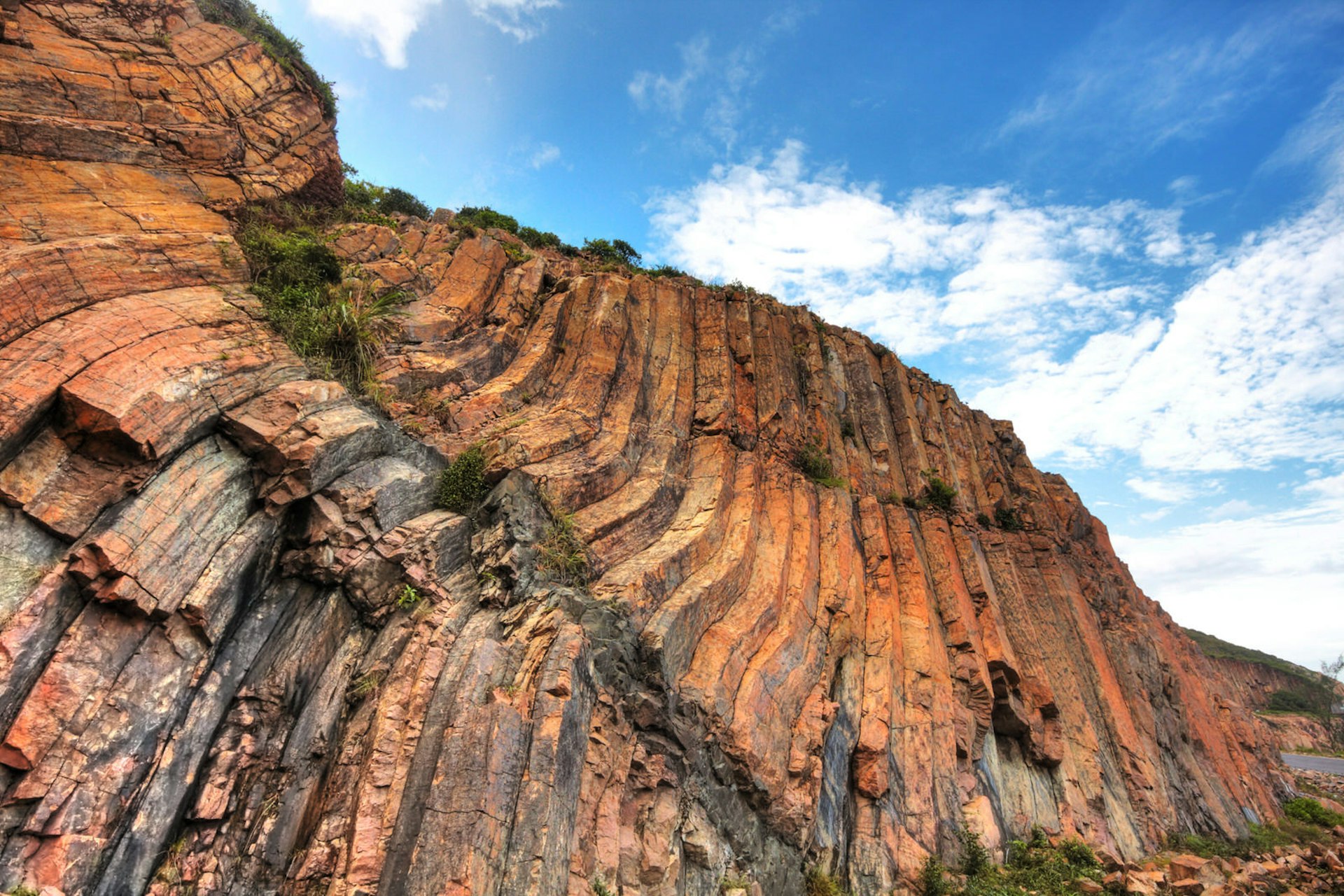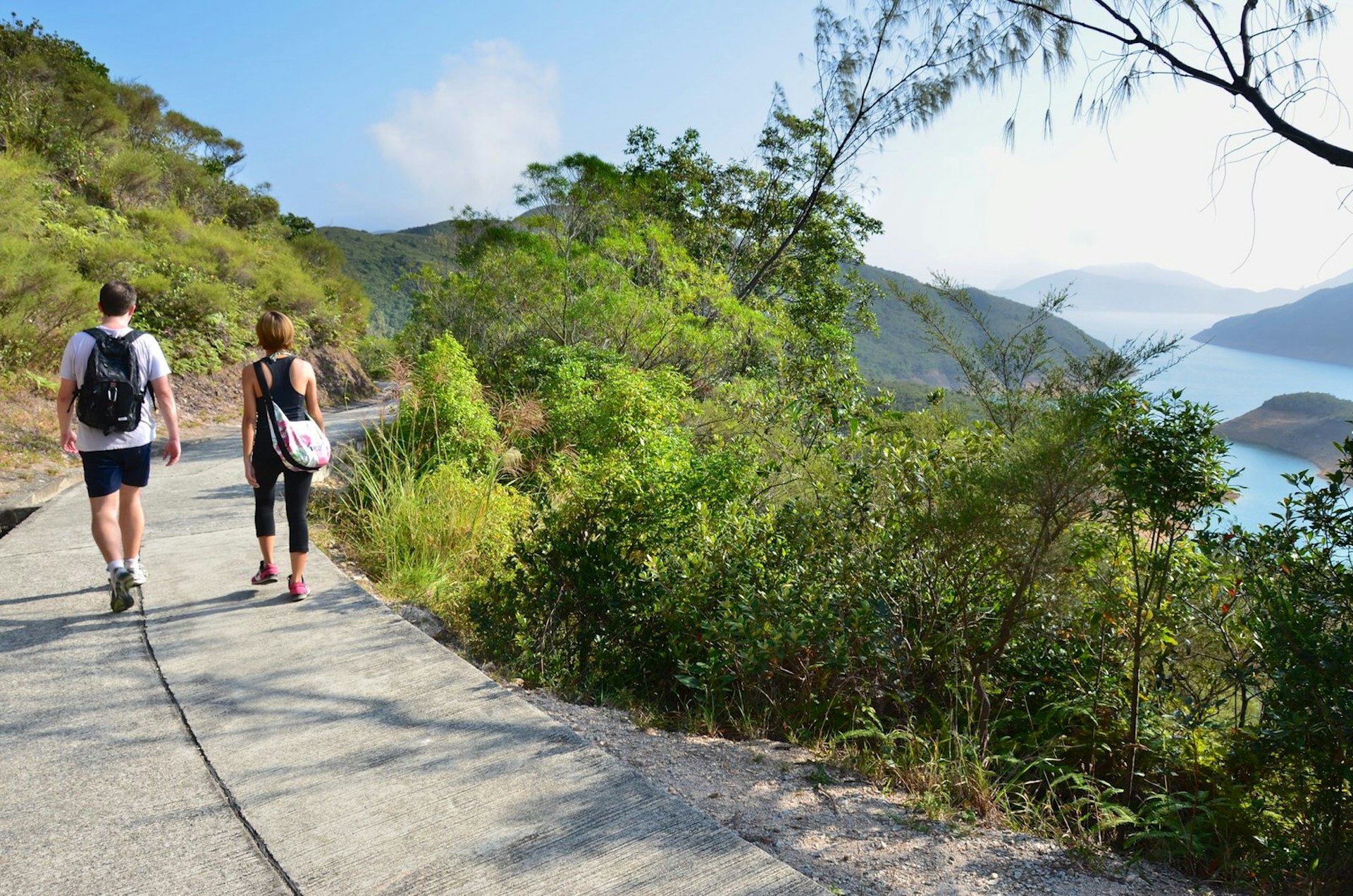Twenty years after its return to China, Hong Kong is collectively awakening to the importance of its natural and cultural heritage. And it should. According to the World Economic Forum in 2015, the city ranks first in Asia and fifth worldwide in terms of its area devoted to conservation. Travel and Tourism Report. Few places offer urban delights and outdoor pursuits as close as here.

The UNESCO-listed Hong Kong Global Geopark is the crown jewel of the city’s natural spaces, covering 50 square kilometers of Hong Kong’s northeast coast. The park consists of two distinct geological regions and eight named sites that range from islands to volcanic rocks, reefs, sea caves and even a tombolo (sea spit). If eight amazing spots weren’t enough to draw you in, here are seven reasons (and a bonus) why we think it’s time to visit the Hong Kong Global Geopark.
1. Getting here is easier than ever.
The Hong Kong government is taking steps to make the spectacular but underplayed Hong Kong Global Geopark more accessible to visitors. The park is divided into two regions – the volcanic rocks in the Sai Kung Peninsula, and the sedimentary formations and old villages in the northeastern New Territories. Guided boat tours now take tourists around the islands that make up the park, and ferries take tourists out for hiking, swimming and wildlife viewing. The easiest island to reach is Sharp Island – home to the park’s Tombolo – as it is connected to Sai Kung Town in about 15 minutes by regular small ferries. Minibuses now run between Sai Kung and the village in central Hong Kong in about half an hour.

2. Get up close to rare volcanic rocks.
The centerpiece of the Hong Kong Global Geopark is the Sai Kung Volcanic Rock Zone: a series of massive, honeycomb-shaped basalt columns. These are not the black basalts found elsewhere in the world. Depending on the light, they are a pink or bright honey color that is rarely seen anywhere on such a large scale. These beautiful giants are the result of a massive explosion about 140 million years ago. Lava and ash solidified and contracted over hundreds of millions of years, creating uniform columns. Sun, wind and waves finished the work, adding sculpture and color. Rocks pose along the coast, touch an island, form a long wall on a sea cliff, climb a sea arch, or wind up a spiral staircase on an island.
3. New buses for Colonial East Dam
If you’re short on time but still want to visit some of Hong Kong’s spectacular geoparks, there’s a new shuttle bus to the area: East Dam of High Island Reservoir, a colonial waterworks architecture. Really beautiful piece. A bus departs from Sai Kung Town four times a day on weekends and public holidays. Fares are HK$90 round-trip (HK$85 for children under 12) or HK$50 one-way. There are guides on board explaining the history and geology of the deposits and volcanic rocks. Visitors have an hour to explore the area before the bus heads back to the city. To ensure a seat, you can book online through the Volcano Discovery Center, which serves as the main tourist information center for the geopark.

4. Stones from the age of dinosaurs
The Geopark’s Sedimentary Rock Region contains some of Hong Kong’s oldest rocks (400 million years). Dating back to the age of the dinosaurs, these ancient stones create interesting silhouettes in vivid plum, ocher and jade hues. The star here is the unusual Devil’s Fist, a human-height sandstone formation that weather and erosion has turned into a finger-like wrist. You’ll also see spectacular shale-like reefs, layered cakes or wave-cut platforms, and rock pools that contain entire ecosystems.
5. Great hiking on the McLehoes Trail
A wonderful alternative to the shuttle bus ride is to hike up to East Dam, which comes along the start of the popular McLehoes Trail, one of Hong Kong’s best hikes. A pleasant 9km saunter along Tai Mong Tsai Road and Sai Kung Man Yee Rd takes you to East Dam. A further 1.6 km, you reach one of the region’s most beautiful beaches, Long Ke, where the blue waters are framed by faint rhyolite columns. From here, you can traverse the next section (13.5 km), which is often hailed as the most scenic part of the 100 km trail. The route passes through majestic peaks and secluded bays, ending at Pak Tam O after five hours.

6. An (Agricultural) Cultural Revival in Lai Chi Wu Village
Although previously semi-abandoned, the 400-year-old village of Lai Chi Wu – a walled Hakka village – is enjoying a new lease of life thanks to the hard work of villagers and conservationists. Rice and vegetables are growing in former fallow fields, old cattle sheds and closed dwellings have been converted into mini-museums and research facilities. And in the main square there is an open air restaurant cooking up a delicious storm. Cultural and environmental tours and a hakka dumpling-making workshop are run every Sunday, with architecture tours, accommodation, and a volunteer soon to add to the colorful offerings of the accommodation scheme (applicable to external tourists). is operated in turn.
7. New ferries abound.
A new ferry service runs between Lai Chi Wu and Ma Liu Shui Pier near Chinese University every Sunday and public holiday, with sailings increased to at least two a week this year. Most geopark tours to the Sedimentary Rock Region call at Lai Chi Wu and you can also get here the old-fashioned way – by hiking from Wu Kao Tang or Lak Keng.

Bonus: sightseeing on a faux vintage tram
A bonus eighth reason, you say? Back in urban Hong Kong, the city’s vibrant heritage – the centuries-old trams, or ‘ding dings’ as locals affectionately call them – is offering a new way to learn about local life and history. The TramOramic tour allows passengers to see a sleek replica of a 1920s open-top tram car on Hong Kong Island. Sightseeing is complemented by a carefully scripted audio guide in eight languages, displays of vintage tram equipment, and souvenirs for sale. A one-hour trip from the Western District to Causeway Bay (or vice versa) also buys you two days of unlimited rides on the Ding Ding.
